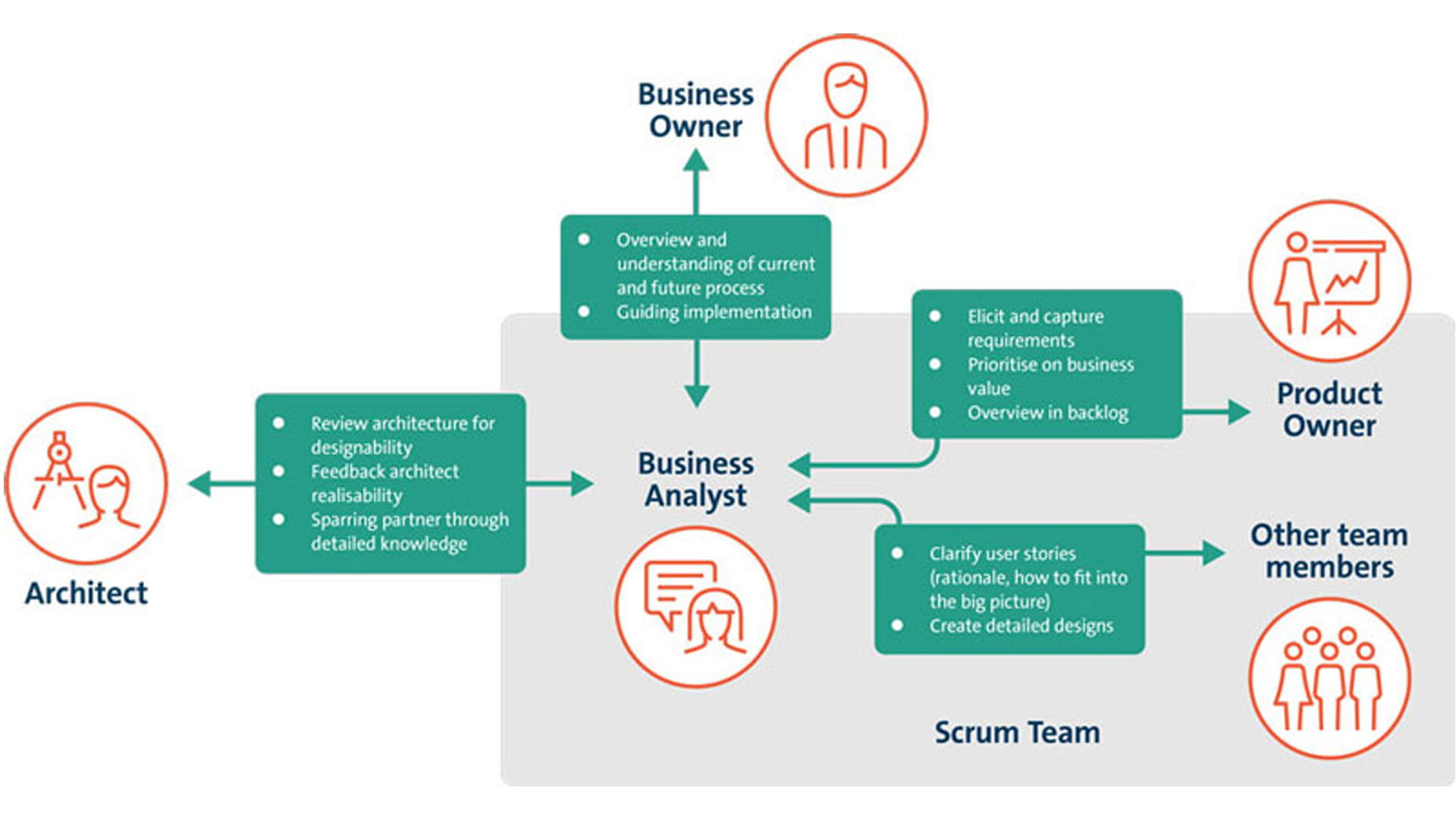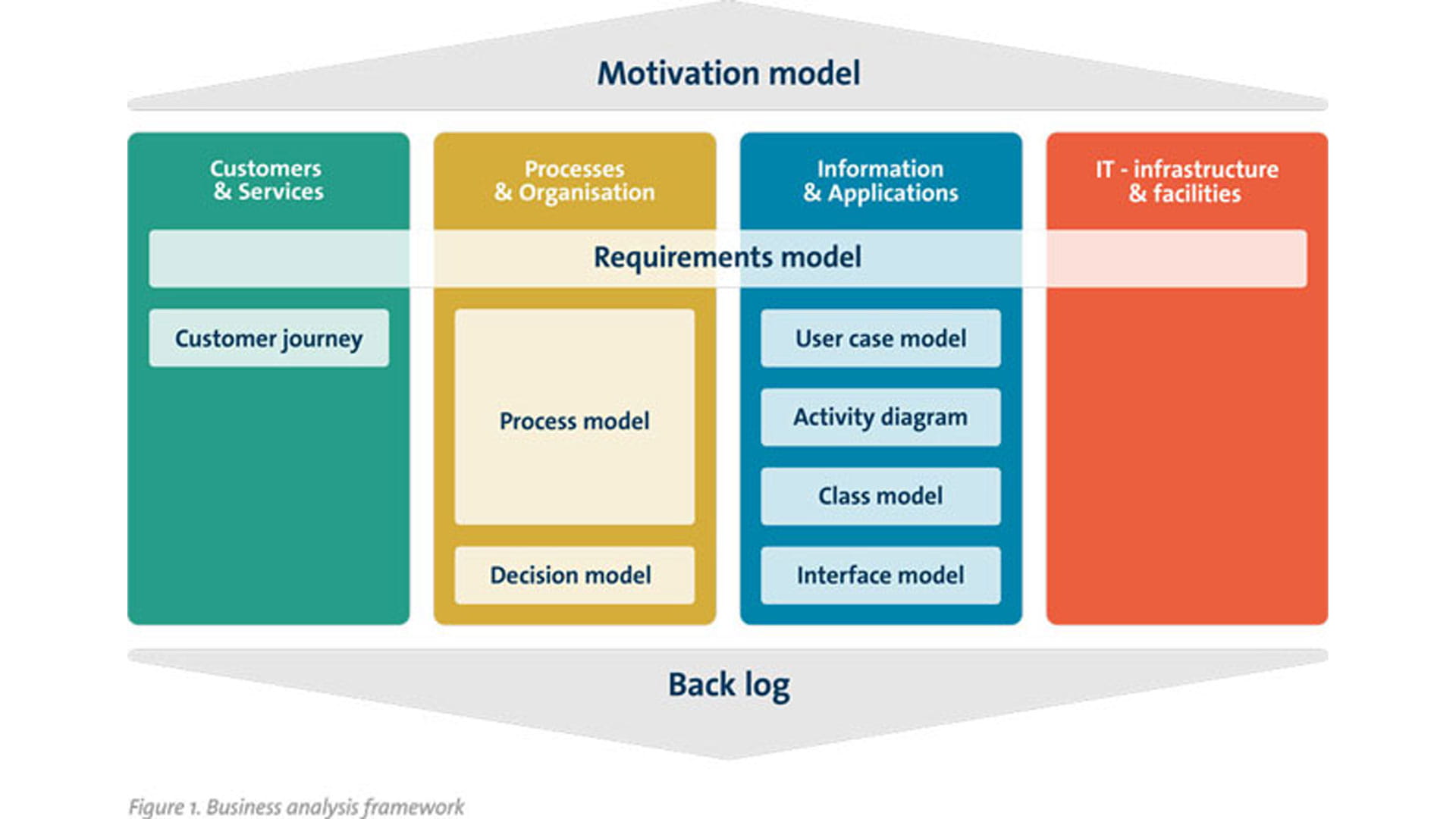Business Analysts in Agile Transformation


Read on to learn:
Our framework in action
Our framework was created using best practice methods like Lean, Agile and Scrum, and using techniques like BPMN and UML, supplemented by years of software development experience from our employees.

The framework and its underlying principles are explained in detail in our article The Agile Change Process. This blog provides an overview of that framework.
The beginning of any change project starts with mapping out the motivation for change. What is the real need? What are the business goals? And which stakeholders are relevant?
This is actually an architecture artefact, but it’s also an important foundation for formulating epics where the business analyst can assist.
Once these motivations are clear, the business analyst uses various models to analyse the current situation or design a desired one. The models cover four aspects of business operations:
- Customers and services
- Processes and organisation
- Information and applications
- IT infrastructure and facilities
The changes are included in a backlog so that they can be realised. In Agile organisations, this is a very iterative process where experiences from realisation sprints are also input to adjust the models and backlog.
This framework acts as a guideline for the business analyst during the implementation of change projects that have both a business and IT component.
It combines the most common models for business analysis and shows how they can be used in conjunction with each other or at various stages of the change process.
The Agile Change Process article focuses on the added value business analysts can bring to an Agile change process, showing how the Novius Business Analysis Framework can elevate their impact and improve project delivery and performance.
It provides a practical example, too, discussing the development of a new way of working for the fictional claims company FIXIT Damage Insurance, using a low code platform called Mendix.
We also cover the common challenges we encounter, and how our framework helps us to deal with them. These include:
- How to prevent thinking too quickly about the solution to the change
- Ensuring you are flexible enough to implement changes from the strategy to the epics
- Helping product owners make realistic estimates of development costs and timeframes
- How to make sure changes from other teams that impact your MVP don’t catch you off guard
For each of these challenges, we’ve provided some top tips that every business analyst can put into practice.
You can read the full article, here.
Anything we can help with?
Have a question, comment or business enquiry? Talk to one of our experts to see how we can help.
Stayupdated
Want to stay on top of the latest news and developments in digital? Our newsletter has you covered.